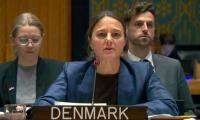ISLAMABAD: Over 12,568 Megawatts of electricity would be added to the national grid after completion of a number of power generation projects by year 2018.
Under a long term plan, the country would have an additional generation capacity of 30,948 MW by the year 2022 through Neelum Jhelum, Chashma nuclear, wind, hydel, LNG, Jamshoro Coal and Bagasse power projects, according to a senior official of the Ministry of Water and Power here.
Around 8,630 MW would be generated under the prioritized China Pakistan Economic Corridor (CPEC) projects in the same period.
Under the Power Generation Policy 2015, several initiatives were taken including Transmission Lines Investment Policy; focus on Coal Based Power, LNG Based Power, CPEC power generation projects of 8630 MW, production through LNG – 3600 MWs and the CASA-1000 project.
In a recently held briefing, he said, under the policy to facilitate new IPPs, 12,113 MW of electricity would be generated.
Giving a breakdown of power generation by year 2022, he said, a total of 30,948 MWs would be generated; of which 38% would be obtained from Hydel, 14% from Renewable, 16% from imported coal, 13% from indigenous coal, 12% from imported LNG and 7% from nuclear.
Under the CPEC, the work was in progress on the $ 36 billion power projects and the completion of these projects will make the country self-sufficient in power sector.
He clarified that the inflow of foreign capital in power projects under CPEC was investment and not loan.
Under the Prime Minister’s direction, transparency was being ensured in all power projects including wind, hydel, coal and solar.
He said, in 2016 the estimated investment in the power sector was estimated to be US$ 3,617 million. In 2017 it was expected to be US$ 11,420 million and by 2019-22 it would be US$ 36,084 million.
He said the customer service has also been improved through enhanced employee efficiency and reduction in response time.
He said, daily payment instructions to generation companies were also published on website including payments made to IPPs and power sector entities.
Similarly the performance of DISCOs was also published on website on quarterly basis.
He said work was going on to upgrade and improve the transmission lines and network, adding, line losses have decreased while power generation increased.
There was no loadshedding during the Sehri, Iftari and Taraweeh timings and said it would further decline by year’s end.
Giving an overview of history of loadshedding he said, it has cut down to eight hours in rural areas, six hours in urban areas, while it is zero for the industrial sector.
He said, by June 2017, the loadshedding hours for rural areas would be down to 3 hours and for urban areas to two hours only.
It may be mentioned here that in 2013 the country faced a power deficit of 5500 MW and its industrial and urban sectors were facing 12 hours loadshedding, while the rural areas faced 14 hours power outage leading to low industrial output, higher unemployment and loss of economic growth.
-
Security forces gun down 30 terrorists in multiple IBOs in KP: ISPR
-
MQM-P calls for new province in Sindh
-
US report validates Pakistan military edge over India: PM
-
Banned TTP poses serious threat to Pakistan security: UNSC panel
-
CM Afridi clarifies remarks on by-poll after ECP requests army deployment
-
Dubai sees 3.2m Pakistani passengers in 2025 as airport sets new milestone
-
Security forces kill 23 Indian proxy terrorists in KP's Kurram
-
Pakistan to construct island to boost oil exploration: report











